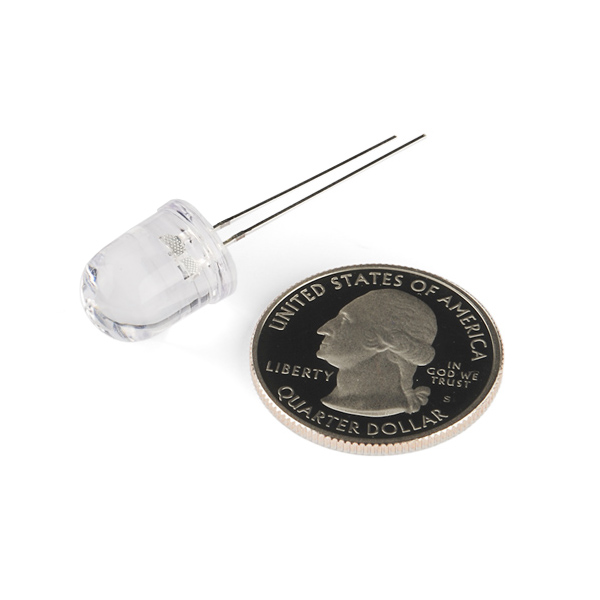LED - 10mm Cycling RGB (fast)
These color-changing LEDs take the work out of creating crazy, flashy, blinky... ness. Simply apply power and the LED will cycle through the RGB colorspace: no external controller necessary! These bright and festive LEDs make great decorations, LED "throwies", indicator lights, etc. Typical forward voltage is 2V.
These 10mm LEDs are of the "fast-changing" variety, meaning they fade-cycle very quickly through several colors and then flash-cycle through several more colors before starting all over again.
LED - 10mm Cycling RGB (fast) Product Help and Resources
Core Skill: Electrical Prototyping
If it requires power, you need to know how much, what all the pins do, and how to hook it up. You may need to reference datasheets, schematics, and know the ins and outs of electronics.
Skill Level: Rookie - You may be required to know a bit more about the component, such as orientation, or how to hook it up, in addition to power requirements. You will need to understand polarized components.
See all skill levels
Comments
Looking for answers to technical questions?
We welcome your comments and suggestions below. However, if you are looking for solutions to technical questions please see our Technical Assistance page.
Customer Reviews
No reviews yet.



Any chance of building these or the slow-changing ones into a Lilypad sew-on LED package?
What happens if you power one of these via PWM ?
We got a new signal generator in at work, so I thought I'd subject the Slow variant I picked up in a previous order to some tests. Check out the results.
Of the scenarios I mentioned, 1 and 3 applied - and a 5th reared its head: errant program behavior. Did not expect that one :)
SFE - or somebody else who has one - would have to test it. It's not generally included in a datasheet because basically.. you're not supposed to PWM them :)
There's several things that could happen, depending on how fast you PWM it / duty cycle.
Typically, you're going to hit #3. If you hit #1 there's no point in PWM'ing it to begin with. #2 is obviously useless. #4 might be the desired effect.
Would be pretty neat to test, though - and maybe make for a nice primer on flashing / auto colorcycling LEDs by SFE? Who do we bribe to make it happen? :)